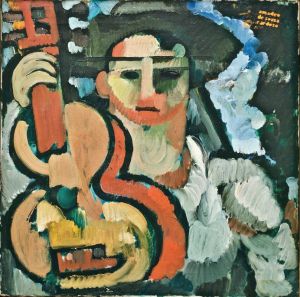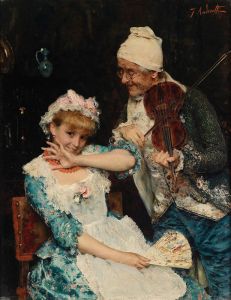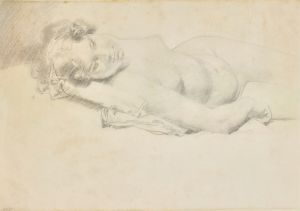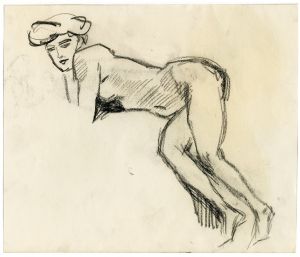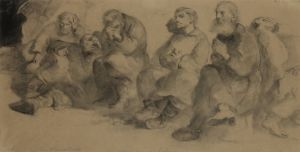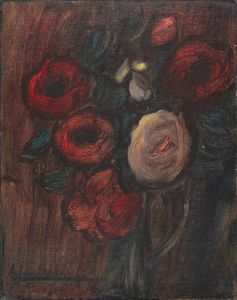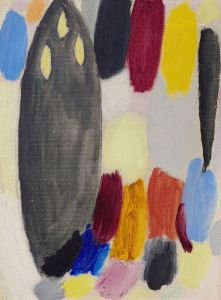
Music – central section of the triptych
A hand-painted replica of Jacek Malczewski’s masterpiece Music – central section of the triptych, meticulously crafted by professional artists to capture the true essence of the original. Each piece is created with museum-quality canvas and rare mineral pigments, carefully painted by experienced artists with delicate brushstrokes and rich, layered colors to perfectly recreate the texture of the original artwork. Unlike machine-printed reproductions, this hand-painted version brings the painting to life, infused with the artist’s emotions and skill in every stroke. Whether for personal collection or home decoration, it instantly elevates the artistic atmosphere of any space.
"Music – central section of the triptych" is a painting by the renowned Polish artist Jacek Malczewski, a leading figure in the Symbolist movement in Poland. Malczewski, born in 1854, is celebrated for his unique style that blends Polish national themes with mythological and allegorical elements. His works often explore complex themes of identity, spirituality, and the human condition, reflecting the socio-political context of Poland during his lifetime.
The painting "Music" is the central section of a triptych, a three-part artwork that is typically hinged together. While specific details about this particular triptych are limited, Malczewski's triptychs often explore interconnected themes and narratives, with each panel contributing to a larger story or concept. The central panel, "Music," likely serves as a focal point for the triptych, encapsulating the core theme or emotion that Malczewski intended to convey.
Malczewski's work is characterized by its rich symbolism and use of allegory. In "Music," as in many of his paintings, he may have employed symbolic imagery to convey deeper meanings related to music's role in human experience or its spiritual and cultural significance. Music, as a theme, often represents harmony, creativity, and the transcendence of the human spirit, which aligns with Malczewski's broader artistic vision.
The artist's use of color, composition, and form in "Music" would be expected to reflect his Symbolist style, which often includes vivid colors, dreamlike scenes, and figures that embody both realism and fantasy. Malczewski was known for his ability to blend the real with the mythical, creating works that invite viewers to explore beyond the surface and engage with the underlying symbolism.
Jacek Malczewski's contribution to Polish art and culture is significant, as he played a crucial role in the Young Poland movement, which sought to rejuvenate Polish art and literature at the turn of the 20th century. His works are housed in various museums and collections, both in Poland and internationally, and continue to be studied for their artistic and historical value.
While specific details about the triptych containing "Music" are scarce, Malczewski's oeuvre provides insight into his thematic interests and artistic techniques. His paintings often reflect a deep engagement with Polish history, mythology, and the existential questions of his time, making him one of the most important figures in Polish art history.





